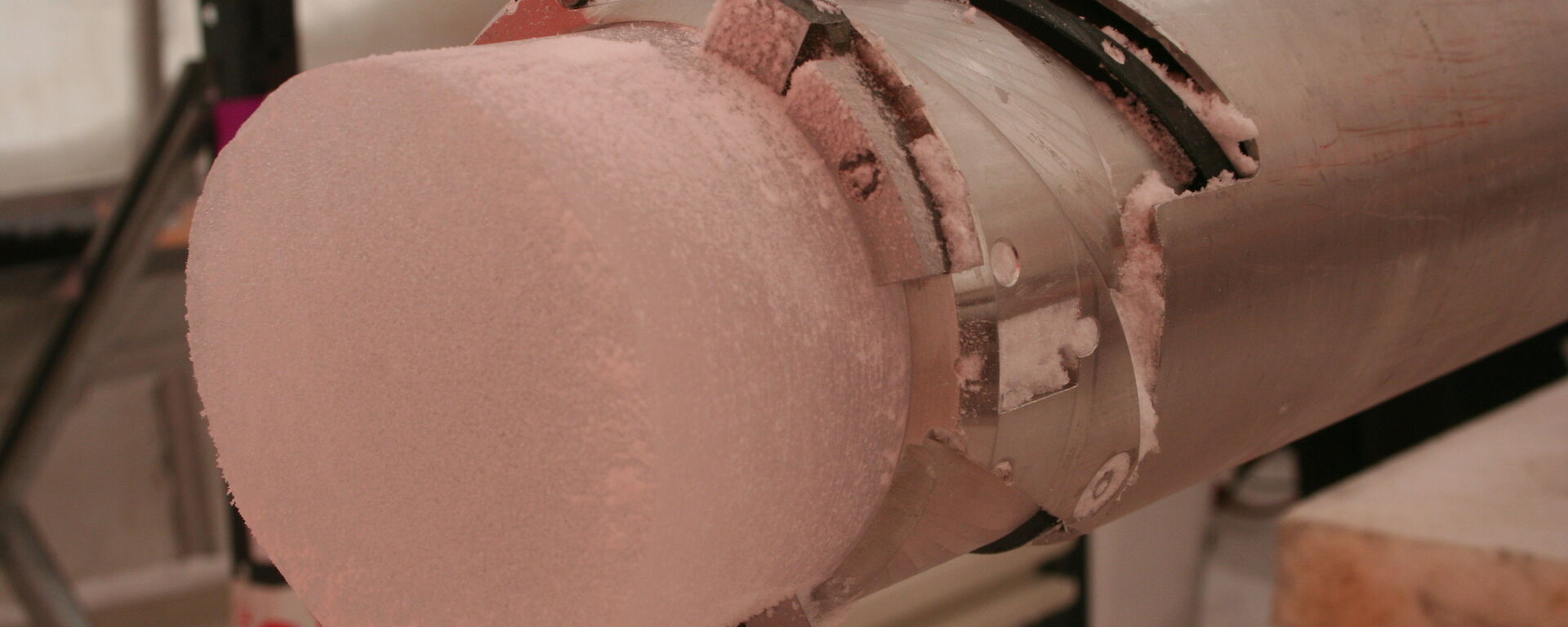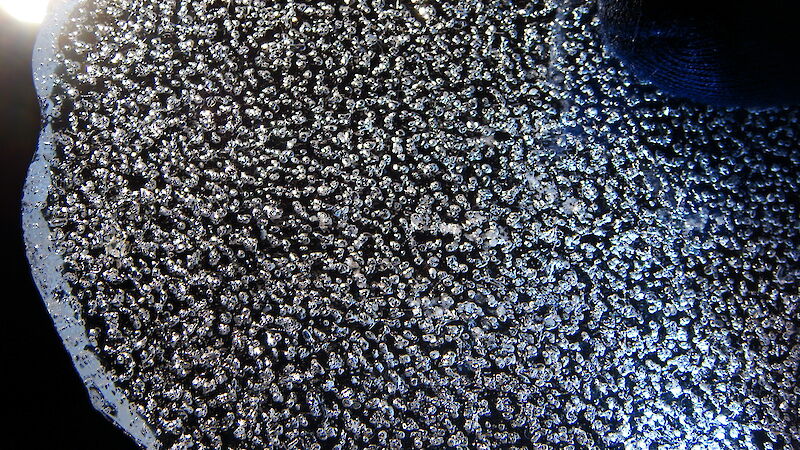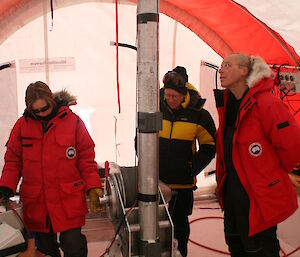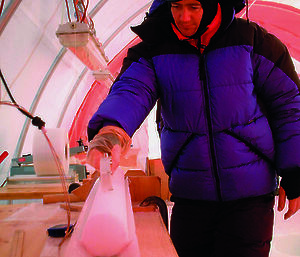New research published today in the prestigious journal Nature Geoscience has revealed the Earth’s land biosphere takes up less carbon during a warming climate.
The research, led by Dr Mauro Rubino of CSIRO and the Seconda Universita di Napoli, and involving the Australian Antarctic Division, used bubbles trapped in Antarctic ice cores in pre-industrial times to measure the sensitivity of the Earth’s land biosphere to changes in temperature.
Past ice core studies have shown that carbon dioxide levels in the atmosphere went down slightly during the Little Ice Age (1500 to 1750 AD). This latest research shows that temperature impacts on the land biosphere were responsible. The study implies a reduction in CO2 uptake in future because of a warmer climate, providing a positive feedback to greenhouse warming as more emissions remain in the atmosphere.
Many of the ice cores samples were collected at the Australian Antarctic Program’s Law Dome site, where past atmospheric composition is preserved in fine detail.
“The very high detail preserved in Law Dome ice cores has been a key to unlocking this information,” said Australian Antarctic Division ice core scientist, Dr Mark Curran, who was a co-author on the research paper.
The results will reduce the uncertainties of climate models such as the Australian Community Climate and Earth System Simulator (ACCESS) which is used to project future climates scenarios of human greenhouse gas emissions.
The study shows that for every degree Celsius of global temperature rise, there is 20 parts per million less CO2 absorbed by the land biosphere.
To date, about half of the CO2 emitted by human activities since 1850 has been taken out of the atmosphere by the land biosphere and the ocean. Uncertainties in how this uptake might change in the future has been a significant source of uncertainty in climate projections.
Understanding how plants and soils respond to warming is one of the big unknowns in climate projections and this study produces independent numbers to compare against models.
The study focused on CO2 changes preserved in ice before, during, and after a naturally-cool period known as the Little Ice Age (1500 to 1750 AD). This period is well suited to focus specifically on the relationship between CO2 and temperature because it occurred just before the growth of industry and agriculture affected CO2 concentrations and the deposition of pollutants and nutrients.
The paper is a collaboration between CSIRO, the Seconda Universita di Napoli, University of Melbourne, British Antarctic Survey, University of East Anglia, Australian Antarctic Division, University of Tasmania and the Australian Nuclear Science and Technology Organisation.





